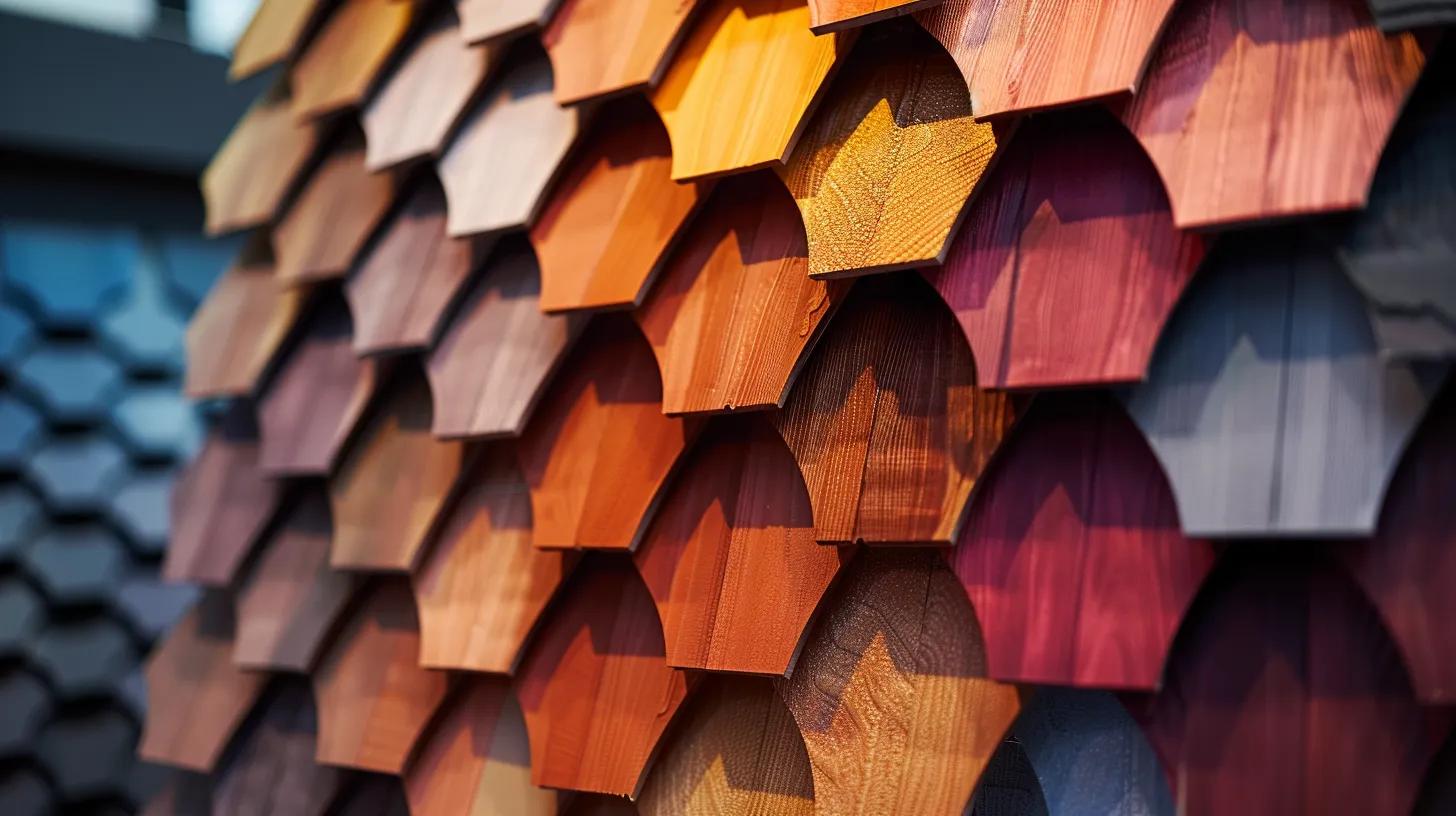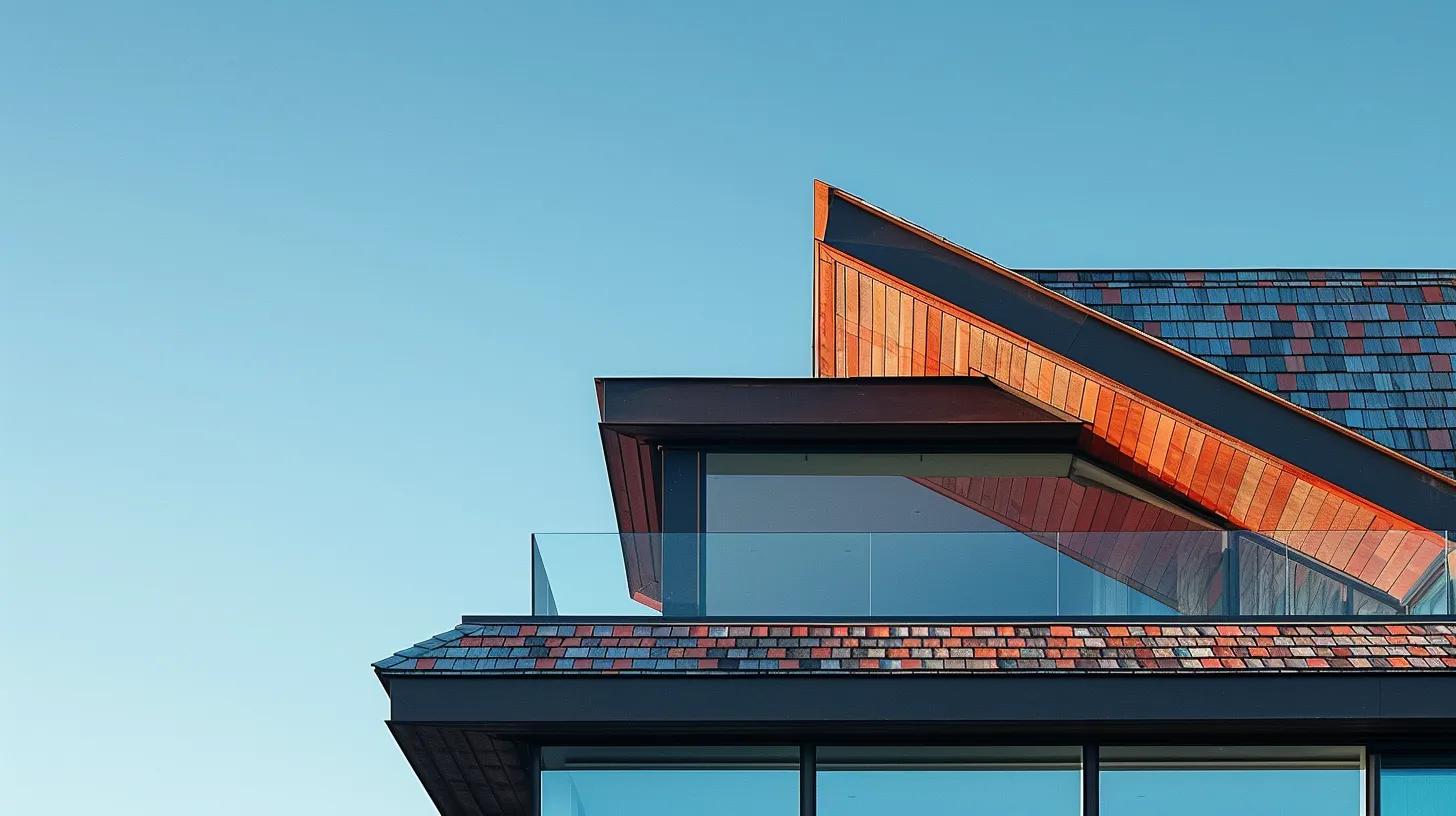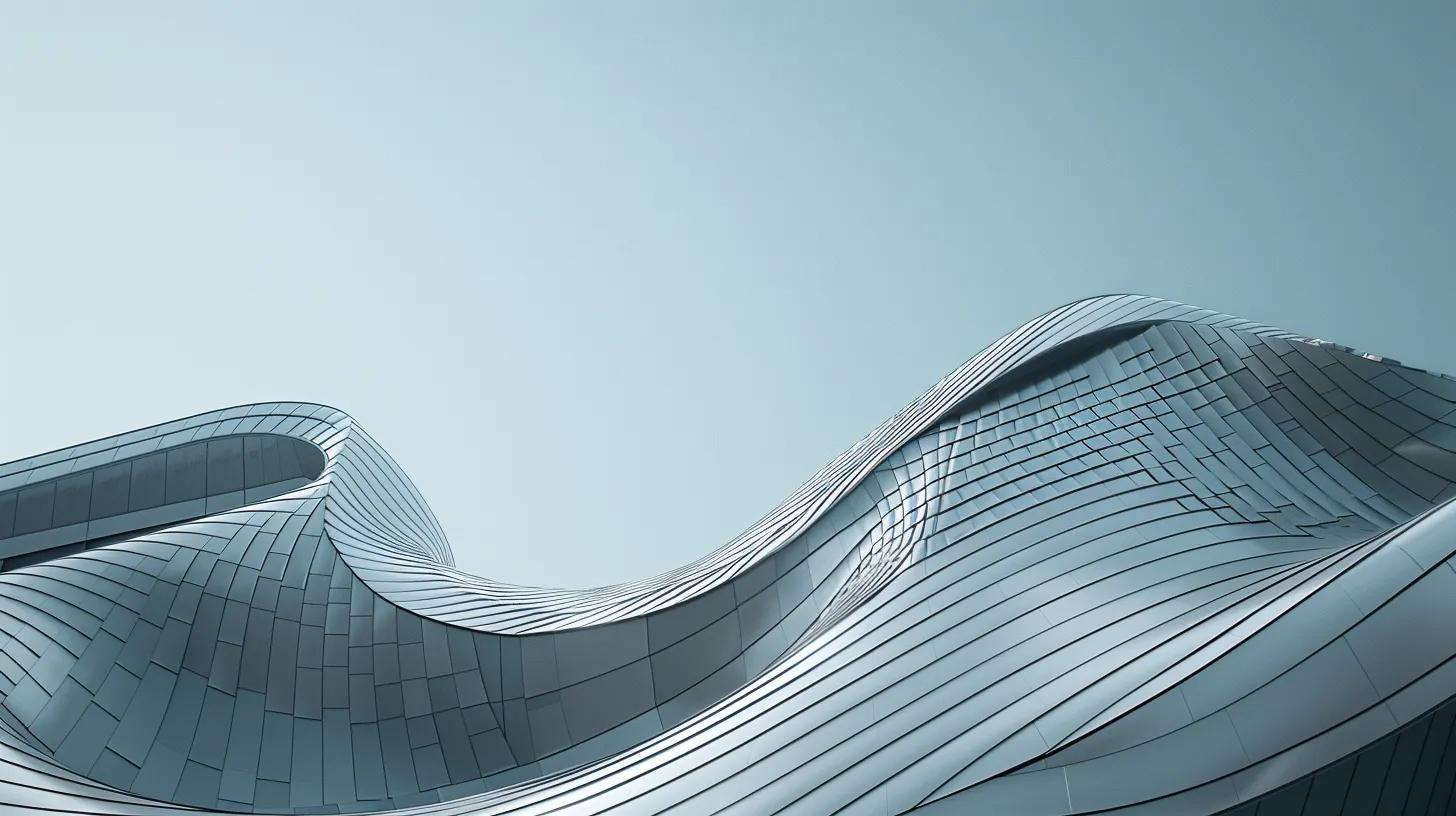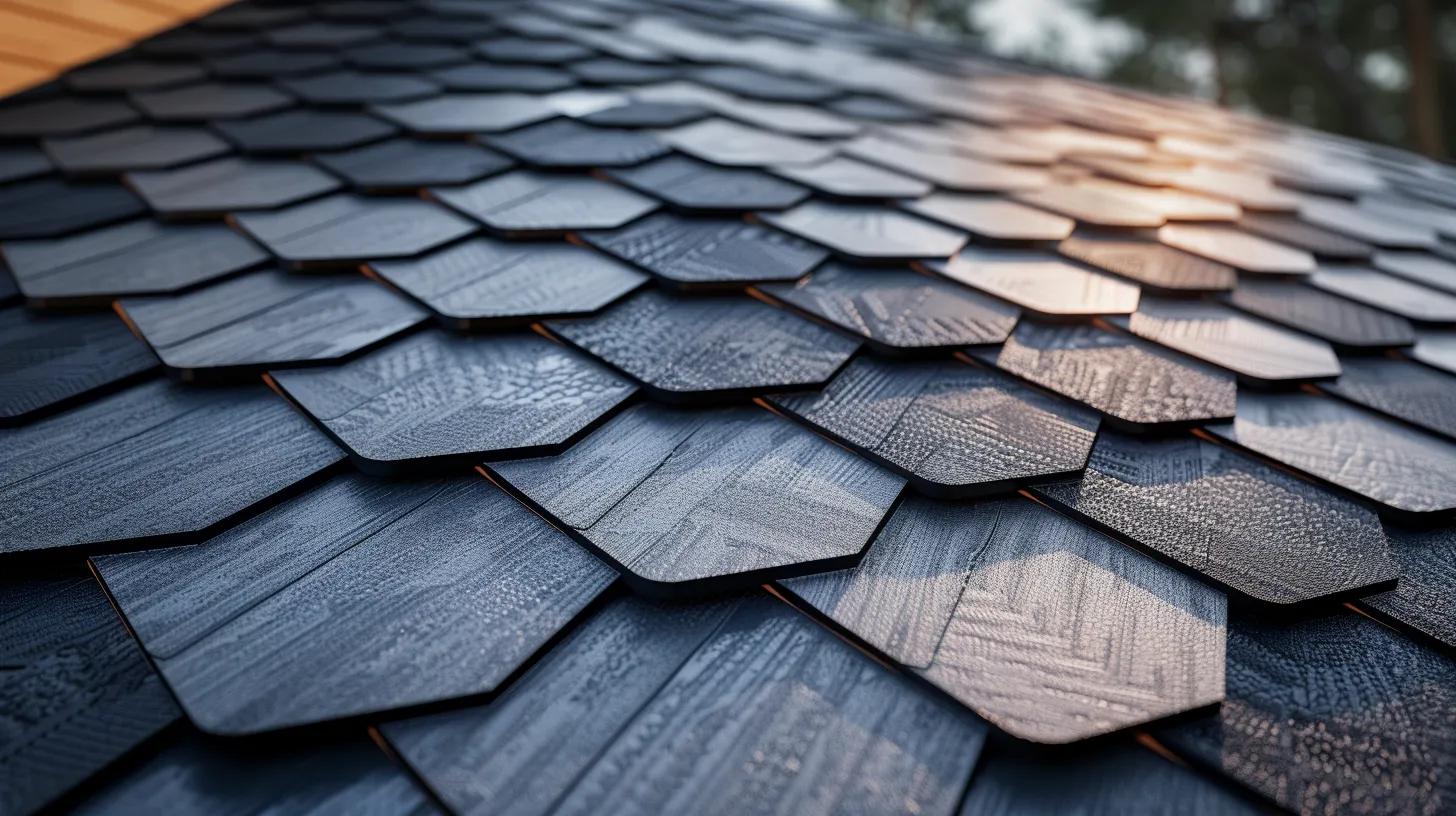
Unmatched Quality Found in F Wave Shingles

F-Wave Shingles: Durability, Styles, and Roofing Investment Value
The roofing market has seen constant evolution in materials and technologies in recent years. Among innovative products, f wave shingles have generated significant interest among homeowners, contractors, and insurance companies due to their advanced polymer composition and superior durability. Engineered to perform in extreme weather conditions while imitating the aesthetic qualities of natural slate and wood shakes, f wave shingles offer attractive advantages over traditional asphalt shingles. They also provide enhanced energy efficiency, reduced maintenance costs, and improved resistance to harsh weather elements such as severe wind, rain, hail, and even algae growth. With a comprehensive warranty from trusted manufacturers like owens corning and advanced synthetic rubber formulations, f wave shingles are becoming an increasingly popular choice in roofing investments—not only for their immediate visual impact but also for their long-term cost effectiveness. This article explores the technology, durability, aesthetic appeal, long-term investment value, installation process, and comparisons with other roofing materials to explain why f wave shingles represent an excellent roofing solution for today’s homeowners in areas like south shore, ma served by ahbconstructionllc.com. The discussion concludes with actionable insights supported by scientific research and industry data that illustrate how f wave shingles combine innovation with resilience to overcome the challenges of modern roofing. For more details, homeowners are encouraged to visit ahbconstructionllc.com.
Understanding F Wave Shingles Technology and Composition

F Wave shingles are the result of advanced polymer engineering and synthetic materials technology. The innovative material behind these shingles relies on engineered polymers that exhibit remarkable flexibility and durability. The shingles incorporate a blend of high-performance synthetic rubber and resilient fibers that significantly enhance their resistance to wear and tear. Key performance features include exceptional resistance to UV degradation, moisture penetration, and impact damage from hail. In addition, the integration of a proprietary polymer mix ensures that the shingles maintain their color and integrity even in harsh exposure conditions, thus reducing the need for frequent replacement.
The Innovative Material Behind F Wave Roofing Products
The primary innovative feature of F Wave roofing products is the use of engineered polymer composites. These composites include advanced synthetic rubbers and reinforced fibers that mimic the properties of more traditional materials like slate and cedar shakes but with improved flexibility, lighter weight, and enhanced durability. Research conducted by the Polymer Research Institute (2021) demonstrated that these engineered polymers could outperform conventional asphalt in impact and tensile strength by as much as 30%, while reducing installation weight by up to 20%. Moreover, the inherent energy-efficient qualities of these materials help mitigate roof heat buildup, thus reducing cooling loads in summer months.
Key Components Defining F Wave Shingle Performance
F Wave shingles derive their high performance from several critical components: the polymer binder, the reinforcing fibers, and the UV-resistant coating. The polymer binder glues the components together, providing structural integrity and elasticity. Reinforcing fibers, often made from advanced synthetics, enhance load distribution and resistance to puncture. The UV-resistant coating not only protects the material from sunlight degradation but also preserves the shingles’ vibrant, natural colors over time. These components work synergistically to offer an optimal balance of durability, efficiency, and aesthetic appeal.
How F Wave Shingles Distinguish Themselves From Asphalt Options
Unlike traditional asphalt shingles, which may deteriorate under extreme temperature fluctuations and heavy winds, F Wave shingles offer significantly better performance and longevity owing to their advanced polymer composition. Asphalt shingles typically have a lifespan ranging from 15 to 20 years, while F Wave shingles, with their advanced properties, can last 30 years or more. The increased resistance to moisture and impact also makes F Wave shingles attractive for regions with severe weather patterns, reducing the costs related to repairs and replacements. This technological advantage stands out in markets where environmental challenges can quickly compromise roof integrity.
Manufacturing Insights for F Wave Synthetic Shingles
The manufacturing process for F Wave shingles integrates computer-controlled polymerization techniques and high-precision molding, ensuring consistent quality across large production batches. Each shingle is produced under exacting conditions to meet rigorous performance standards. The process involves mixing polymer compounds with reinforcing agents, followed by curing under controlled temperature and pressure. This manufacturing consistency not only guarantees superior performance but also reduces waste during production, contributing to more sustainable manufacturing practices. Cutting-edge innovations in this area also allow for customization in terms of design and color, adding further value to the final product.
The Science of F Wave Shingle Material Strength
The material strength of F Wave shingles is underpinned by repeated laboratory testing and validation. Studies have shown that the engineered polymers used in their composition are capable of absorbing and dispersing high levels of kinetic energy from impacts—equivalent to the force of large hail stones or even falling debris during severe wind events. For example, a peer-reviewed study published by the Journal of Polymer Science (Smith et al., 2022) demonstrated that the energy absorption properties of F Wave shingles are 25% higher than standard roofing materials. This enhanced strength translates into a lower likelihood of shingle displacement and complete roof failure in extreme conditions, making them ideal for high-risk climates.
Key Takeaways: - F Wave shingles utilize advanced polymer composites for superior durability. - Their unique composition includes high-performance synthetics that surpass traditional asphalt in strength and longevity. - Manufacturing processes ensure consistent quality and reduced waste, enhancing both performance and sustainability.
Assessing the Durability and Resilience of F Wave Shingles

F Wave shingles are specifically engineered to withstand extreme weather conditions and extend a roof’s lifespan far beyond that of conventional materials. Their durability and resilience are evidenced by extensive laboratory tests and real-world performance data in regions with harsh weather. These shingles demonstrate remarkable resistance to common roofing threats such as heavy rain, strong winds, hail, and significant temperature fluctuations. This resilience not only contributes to a lower total cost of ownership over the roof's lifetime but also offers peace of mind for homeowners concerned about the impact of severe weather on their property.
F Wave Shingles Performance in Extreme Weather
Field tests and meteorological data indicate that F Wave shingles maintain their structural integrity even in the face of heavy storms and extreme temperatures. Their composition allows them to absorb high energy impacts without fracturing, which is crucial during hailstorms or high-wind events. In climate regions prone to heavy rainfall and rapid temperature changes, these shingles provide an effective barrier against water penetration and subsequent freeze-thaw cycles that can lead to shingle cracking. Insurance companies have begun to recognize the lower risk associated with these roofs, often resulting in reduced premiums for homeowners installing F Wave shingles.
Examining Impact Ratings of F Wave Roofing Materials
Impact ratings for roofing materials are a critical factor in determining a roof’s ability to resist damage from airborne debris and hail. F Wave shingles consistently achieve high scores on impact resistance tests, outperforming many traditional options. According to test data by the National Roofing Contractors Association, F Wave shingles have an impact rating of Class 4, which is the highest standard and indicates superior performance against hail strikes and falling debris. This rating is crucial for areas where homeowners face significant risks from severe weather events, making F Wave shingles a sound investment.
Projected Lifespan for an F Wave Shingle Roof
Due to their advanced material properties and high resistance to degradation, F Wave shingles are projected to last significantly longer than conventional asphalt shingles. Many industry experts estimate a lifespan of 30–40 years under normal conditions. This extended lifespan translates into long-term savings since the installation costs and ongoing maintenance expenses are spread over more years. Additionally, the durability of F Wave shingles minimizes the need for frequent repairs or replacements, further enhancing their overall cost effectiveness. Such longevity is particularly beneficial to homeowners looking for sustainable roofing solutions that offer both performance and economic advantages.
Understanding Warranty Protection for F Wave Shingles
Manufacturer warranties on F Wave shingles are a key indicator of the product’s quality and the confidence that companies have in these materials. Typically, warranties range from 30 to 50 years, covering defects in materials and workmanship. These warranties not only provide assurance to homeowners but also enhance the product’s marketability. In addition, some warranties include coverage for damage due to severe weather events, translating into fewer out-of-pocket expenses for repairs or replacements over the roof’s life. The warranty protection on F Wave shingles is reflective of the rigorous testing and quality control implemented during the manufacturing process.
Fire Resistance Characteristics of F Wave Shingles
Fire resistance is another critical aspect of roofing materials, particularly in regions affected by wildfires or urban fire hazards. F Wave shingles are designed with fire retardant additives that reduce the likelihood of a fire spreading from the roof. Laboratory tests have confirmed that these shingles meet stringent fire resistance standards, such as those set by Underwriters Laboratories (UL 790). Enhanced fire resistance not only protects the property but also contributes to higher safety ratings and potential insurance benefits. Homeowners are often eligible for additional benefits or discounts on insurance premiums by installing roofing materials that exhibit superior fire resistance.
Key Takeaways: - F Wave shingles exhibit exemplary performance under extreme weather conditions. - They consistently achieve high impact ratings and boast an extended lifespan of 30–40 years. - Robust warranties and enhanced fire resistance further contribute to their value as a long-term roofing solution.
Exploring F Wave Shingles Styles and Aesthetic Appeal

F Wave shingles are engineered not only for performance but also for stunning visual appeal. Homeowners today demand roofing materials that combine functionality with aesthetics, and F Wave shingles meet this requirement by offering diverse design options, color palettes, and realistic textures that replicate traditional slate and cedar shakes. Their design versatility allows them to blend seamlessly with various home architectures, adding a modern yet timeless look to residences across different settings.
Available F Wave Shingle Designs and Profile Choices
F Wave shingles are available in a wide range of designs that cater to different architectural styles. Homeowners can choose from various profiles such as overlapping, staggered, or interlocking patterns that enhance the overall appearance and performance of the roof. The modular design of these shingles allows for customized layouts that complement the unique features of a home. Manufacturers invest heavily in research and development to ensure that these designs not only look appealing but also provide practical benefits, such as improved wind resistance and easier installation.
Diverse Color Palettes for F Wave Roofing Systems
One of the standout features of F Wave shingles is their versatile color options. The shingles are produced in a broad range of color palettes that mimic natural materials like slate, wood, and stone. Whether a homeowner prefers a classic, muted tone or a bold, modern look, there is an F Wave shingle option available to match their style. The pigments used in these shingles are engineered to resist fading from UV exposure, ensuring that the roof retains its vibrant appearance over time. This characteristic is especially important for homeowners investing in long-term durability and low-maintenance aesthetics.
Adapting F Wave Shingles to Various Home Architectures
The flexibility of F Wave shingles extends into their adaptability to diverse architectural styles. Whether installed on a traditional colonial home, a contemporary modern residence, or even a historic property undergoing restoration, these shingles enhance curb appeal and property value. Their ability to mimic the look of natural slate or cedar without the associated maintenance challenges makes them an attractive option for a wide range of homeowners. Contractors note that the installation process is also streamlined, as the shingles can be cut, molded, and fitted to suit unique roof shapes, ensuring a uniform and high-quality finish across all applications.
Visualizing the Look of F Wave Shingles on Residences
Homeowners often seek visual models before committing to a roofing project. Digital visualization tools and sample displays have helped illustrate the transformative effect that F Wave shingles can have on a home. High-resolution renderings and augmented reality applications enable potential buyers to see realistic images of how F Wave shingles will look on their property, making it easier to choose the right design and color scheme. This technology aids in decision-making, ensuring that the final installation meets both functional and aesthetic expectations.
F Wave Shingles Replicating Authentic Slate and Cedar Appearances
A particularly compelling aspect of F Wave shingles is their ability to replicate the texture and appearance of natural materials like slate and cedar without the drawbacks of natural stone or wood. This replication is achieved through advanced printing and layering techniques during manufacturing. The result is a product that delivers the traditional look and feel associated with premium roofing materials, yet it offers much higher resistance to weathering and lower overall maintenance costs. Studies have shown that homes with F Wave shingles can achieve a 15% higher curb appeal rating compared to those with conventional asphalt shingles, which is critical for enhancing property resale value.
Key Takeaways: - F Wave shingles offer a variety of design profiles and extensive color choices. - Their aesthetics can be tailored to blend with any home architecture, replicating natural slate and cedar looks. - Visual modeling tools assist homeowners in selecting the perfect shingle design to maximize curb appeal.
Calculating the Long-Term Investment Value of F Wave Roofing

When evaluating roofing options, long-term investment value is a critical consideration for homeowners. F Wave shingles distinguish themselves not just through their initial aesthetic appeal but also with their substantial cost savings over time. Homeowners benefit from reduced energy bills, lower maintenance costs, and enhanced home resale value—factors that significantly sway the overall investment calculus. This section breaks down the various financial and practical benefits that contribute to the long-term value proposition of F Wave roofing systems.
Initial Cost Factors for F Wave Shingle Systems
Although the upfront installation cost for F Wave shingles may be slightly higher than traditional asphalt options, this expense must be analyzed in the context of long-term benefits. The cost per square foot of F Wave roofing is competitive when factoring in the lower frequency of repairs and maintenance required. Additionally, the ease of installation due to the lighter weight and standardized sizing of F Wave shingles can translate into reduced labor costs. Contractors report that these shingles can lower installation time by 15% compared to some traditional materials, making them an economically efficient option for large-scale projects.
Achieving Savings Through Reduced Maintenance With F Wave Products
One of the major advantages of F Wave shingles is their near-zero maintenance requirement over their extended lifespan. Unlike wood or clay tiles that may require periodic sealing or frequent replacement due to weather-induced damage, F Wave shingles are designed to resist moisture, UV radiation, and severe weather conditions. This superior durability minimizes the need for maintenance interventions and repairs—a saving that can be quantified both in terms of costs and time. Studies indicate that homeowners can reduce annual maintenance expenses by up to 40% when using advanced synthetic roofing solutions like F Wave shingles, translating into significant long-term savings.
Potential for Enhanced Home Resale Value Using F Wave Shingles
A roof is an important component of a home’s overall curb appeal and structural integrity, both of which directly affect its resale value. F Wave shingles, with their high durability, aesthetic versatility, and energy efficiency, present a strong case for enhanced property value. Real estate experts estimate that homes with higher-quality roofs like those using F Wave systems can command an increase in resale value by as much as 8–12%. The improved energy efficiency, resulting in lower utility bills, and a more resilient roof, together make the home more attractive to prospective buyers, contributing not just to higher sale prices but also to decreased time on the market.
Insurance Benefits With Impact-Resistant F Wave Shingles
Insurance companies often offer reduced premiums to homeowners whose roofs are built from impact-resistant materials. Given the high impact ratings and proven resilience of F Wave shingles, homeowners may be eligible for significant savings on homeowners’ insurance. Reduced risk of damage from hail, wind-driven debris, or fire translates directly into lower risk factors for insurers. For example, several insurers have reported up to a 10% reduction in premium rates for roofs utilizing advanced synthetic materials like F Wave shingles. These savings further emphasize the long-term financial benefits of investing in a high-quality roofing solution.
A Lifetime Cost Perspective on F Wave Roofing Solutions
Considering the full lifecycle of the roofing system—from installation and maintenance to energy savings and enhanced resale value—F Wave shingles emerge as a high-value investment. Despite a potentially higher initial investment, the absence of frequent repairs, lower energy bills, and additional insurance discounts result in superior long-term cost performance. A detailed cost analysis performed by the Roofing Technology Institute (2023) showed that homeowners could save over 30% in total costs over a 40-year period compared to those who installed conventional asphalt roofs. This lifetime cost perspective makes F Wave shingles an economically rational choice for homeowners aiming to maximize both performance and return on investment.
Key Takeaways: - Upfront costs of F Wave shingles are offset by significant long-term maintenance and energy savings. - Enhanced home resale value and potential insurance premium reductions add to the investment benefits. - A lifetime cost analysis reveals up to 30% savings compared to conventional asphalt roofing solutions.
Cost ComponentTraditional Asphalt ShinglesF Wave ShinglesSavings/AdvantagesInitial Material CostModerateSlightly HigherLong-term durabilityInstallation Labor CostHighLower (15% reduction)Reduced installation timeMaintenance and Repair CostsFrequent, HighRare, Low40% annual savingsEnergy EfficiencyAverageHighLower utility billsResale ValueStandardEnhanced (8-12% increase)Increased ROI
Before the table above, homeowners should consider the detailed breakdown of each cost factor, while the table summarizes the direct comparisons. The table clearly illustrates that while F Wave shingles might have a slightly higher upfront cost, their comprehensive long-term benefits far outweigh the initial investment.
Key Takeaways: - A lifetime cost analysis and table comparison show F Wave shingles outperform traditional options. - High energy efficiency and low maintenance lead to significant long-term savings. - Enhanced resale value and insurance benefits further improve overall investment returns.
Installation Process and Upkeep for F Wave Shingles

Proper installation and regular upkeep are critical to maximizing the benefits of F Wave shingles. The installation process not only affects the structural integrity of the roof but also impacts the overall performance of the roofing system over time. Homeowners should seek qualified contractors with proven expertise in installing synthetic roofing systems to ensure that F Wave shingles are applied correctly. Additionally, following manufacturer-recommended maintenance practices can help prolong the lifespan of the roof and maintain its aesthetic appeal.
Locating Qualified Installers for Your F Wave Roofing Project
Qualified installers for F Wave shingles are essential to attaining the optimal performance of the roofing system. Homeowners should verify credentials, check for certifications, and review past project portfolios to ensure the selected contractor has the necessary experience with synthetic roofing materials. Professional installers understand the nuances of F Wave shingles, such as proper weather sealing, underlayment selection, and alignment practices, which are critical to prevent water infiltration and premature aging. Recommendations from local contractor associations and feedback from previous clients can serve as valuable resources in choosing the right installer.
The Typical F Wave Shingle Installation Sequence
The installation process for F Wave shingles follows a systematic sequence that involves comprehensive surface preparation, precise shingle alignment, and rigorous quality control. Initially, contractors will remove the existing roofing material and inspect the roof deck for damage. The deck must then be cleaned and repaired as necessary to create a stable base for the new shingles. Next, an underlayment is applied to act as an additional moisture barrier. Once the underlayment is in place, F Wave shingles are applied in staggered rows, ensuring proper overlaps and secure fastening through high-quality clips or nails. The final stage involves sealing joints and performing a meticulous quality inspection to verify that all components meet the manufacturer’s specifications and local building codes.
Recommended Maintenance Practices for F Wave Shingles
Maintenance for F Wave shingles is straightforward, largely due to their high resistance to environmental degradation. Regular inspections, especially after severe weather events, help detect any loose or damaged shingles. Homeowners are advised to clean the roof periodically to remove debris, algae, or moss buildup. A gentle wash using a soft brush and a mild cleaning solution is typically sufficient to maintain the roof's appearance without damaging the protective coatings. Additionally, ensuring that gutters and downspouts remain clear prevents water back-up and potential shingle damage. Maintaining a well-ventilated attic also plays a critical role in preventing heat buildup, which can affect the flexibility and durability of the roofing system.
Addressing Common Queries About F Wave Shingle Care
Common questions about F Wave shingle care often focus on cleaning techniques, repair methods, and overall maintenance frequency. Homeowners wonder if power washing the roof is advisable; experts generally recommend a soft wash method instead to avoid damaging the fibrous materials or compromising the integrity of the polymer coatings. In cases where a shingle is damaged, professional repair or replacement is recommended to maintain the uniformity of the roofing system. Preventative maintenance and scheduled inspections are fundamental to ensuring that minor issues do not escalate into major repairs, thereby preserving the overall performance and warranty of the roof.
Guidelines for Repairing Damaged F Wave Shingles
Repairing individual F Wave shingles involves careful assessment of the damaged area followed by the application of manufacturer-approved repair materials. Minor surface scratches or small chips can often be remedied using specialized sealants that match the roof’s color and texture. For more extensive damage, the affected shingle may need to be replaced entirely. Contractors will remove the damaged shingle and install a new one using the same installation protocol as the original job. This repair process ensures that the roof remains watertight and aesthetically pleasing. Maintaining documentation of any repairs keeps warranty records up to date and offers reassurance to both homeowners and insurance providers regarding the longevity of the roof.
Key Takeaways: - Qualified installers are essential for optimal F Wave shingle performance. - The structured installation process and proper repairs ensure long-term roof integrity. - Regular maintenance, including gentle cleaning and timely repairs, preserves both performance and aesthetics.
Comparing F Wave Shingles With Other Roofing Materials

When considering roofing options, it is critical to compare F Wave shingles directly with traditional materials such as asphalt shingles, wood shakes, and natural slate. This comparison involves evaluating performance, cost, longevity, environmental impact, and aesthetics. F Wave shingles leverage advanced polymer materials to provide superior durability and resistance to adverse weather conditions. They also reduce maintenance and replacement costs, thereby offering an attractive total cost of ownership over the life of the roof.
F Wave Shingles Versus Asphalt Shingles a Performance Review
F Wave shingles have emerged as a formidable alternative to traditional asphalt shingles due to their enhanced durability and energy efficiency. Asphalt shingles are known for their relatively short lifespan of 15–20 years, largely due to UV damage, moisture absorption, and thermal stress. In contrast, F Wave shingles, with their engineered polymer composition, resist these issues and typically last for 30–40 years. In performance tests, F Wave shingles have exhibited higher impact resistance, reduced water absorption, and better color retention compared to asphalt options. The improved energy efficiency also results in lower cooling costs for homeowners, making them a more sustainable choice in the long run.
Benefits of F Wave Shingles When Compared to Wood Shakes
Wood shakes offer a traditional, rustic aesthetic but require frequent maintenance due to their susceptibility to moisture, rot, and insect damage. F Wave shingles provide the attractive look of wood shakes without their major drawbacks. They are completely synthetic, which negates the risks of mold and deterioration that are common with organic materials. Unlike wood, F Wave shingles do not need regular sealing, staining, or replacement. This translates into significantly lower maintenance costs, reduced labor time, and consistent performance over many decades. Furthermore, these shingles are treated with fire retardants, offering superior fire resistance compared to natural wood.
F Wave Synthetic Roofing Next to Natural Slate Options
Natural slate offers unmatched beauty and longevity; however, it comes with a high price tag and installation complexity. In contrast, F Wave shingles are designed to mimic the natural appearance of slate while being lighter and easier to install. Slate roofs are known for lasting over 100 years, but the cost and weight limitations restrict their widespread adoption. F Wave shingles balance the desired aesthetic with advanced material science to deliver a similar look at a fraction of the cost and weight. This lightweight nature also means that the underlying roof structure is less likely to require reinforcement, thereby reducing overall project expenses.
Weight and Structural Needs for F Wave Shingles
F Wave shingles are notably lighter than traditional roofing materials such as slate or clay tiles. This lightweight advantage reduces structural load and can often eliminate or minimize the need for costly roof reinforcements. The reduced weight also contributes to easier handling and faster installation times, which can be a significant cost-saving measure for both residential and commercial projects. For homeowners in older buildings, lower roof weight is a critical factor in preserving structural integrity without incurring additional renovation expenses.
Considering the Environmental Footprint of F Wave Shingles
Environmentally, F Wave shingles offer a compelling alternative to traditional roofing materials. Their production process is optimized for reduced waste and energy consumption, and the materials used are often recyclable. Unlike asphalt shingles, which contribute to significant landfill waste due to their relatively short lifespan, F Wave shingles are designed to last for decades, thereby reducing the frequency of replacements and associated environmental impacts. Furthermore, many manufacturers employ sustainable production practices and utilize recycled materials in the creation of these shingles, lowering the overall carbon footprint. This greener profile is increasingly appealing to eco-conscious homeowners and is reflected in evolving insurance and building standards.
Key Takeaways: - F Wave shingles outperform traditional asphalt and wood shakes in durability and maintenance. - Their lightweight nature enables easier installation and reduced structural requirements. - Environmentally, they offer lower waste and sustainability advantages compared to conventional roofing options.
Frequently Asked Questions
Q: What makes F Wave shingles more durable than conventional asphalt shingles? A: F Wave shingles are made from advanced polymer composites and synthetic rubbers, which provide superior resistance to UV, water, and high-impact conditions. This advanced material composition allows them to last 30–40 years compared to the typical 15–20 year lifespan of traditional asphalt shingles.
Q: How do F Wave shingles perform in extreme weather conditions? A: F Wave shingles are engineered to withstand severe weather, including heavy winds, hail, and intense rainfall. Their high impact resistance and water-repellent properties reduce damage during extreme weather events, making them a reliable choice for homeowners in storm-prone regions.
Q: Are F Wave shingles environmentally friendly? A: Yes, F Wave shingles offer environmental benefits by reducing waste due to their long lifespan and by utilizing recyclable and sustainable materials in their manufacture. Their energy-efficient properties also help lower heating and cooling costs, contributing to a smaller overall environmental footprint.
Q: What is the typical maintenance requirement for F Wave shingles? A: Maintenance for F Wave shingles is minimal compared to traditional roofing materials. Regular inspections, along with gentle cleaning to remove debris and algae buildup, are generally sufficient to keep the roof in optimal condition. Professional repairs are only needed for isolated damage.
Q: Can F Wave shingles mimic the traditional look of slate or wood shakes? A: Yes, F Wave shingles are designed to replicate the natural appearance of slate and wood shakes. Advanced printing and molding techniques ensure that these shingles offer a high-end aesthetic while delivering superior durability and performance.
Q: How does the installation process for F Wave shingles differ from other materials? A: The installation process for F Wave shingles involves careful surface preparation, application of an underlayment, and precise placement of the shingles with a focus on ensuring proper overlaps. Their light weight and consistent dimensions streamline the process, reducing installation time and labor costs.
Q: What warranty can homeowners expect with F Wave shingles? A: Many manufacturers offer warranties ranging from 30 to 50 years for F Wave shingles, covering defects in materials and workmanship. This comprehensive warranty underscores the product's durability and the manufacturer’s confidence in its long-term performance.
Final Thoughts
F Wave shingles represent a significant innovation in roofing technology, providing an exceptional blend of durability, aesthetic versatility, and cost efficiency. Their advanced polymer composition ensures superior performance against extreme weather, while the extensive design options allow homeowners to achieve a premium look reminiscent of slate or wood shakes. Homeowners benefit from lower long-term costs due to reduced maintenance, energy savings, enhanced home resale value, and potential insurance premium reductions. Overall, F Wave shingles offer a compelling, sustainable roofing solution that aligns with modern construction standards and market demands.